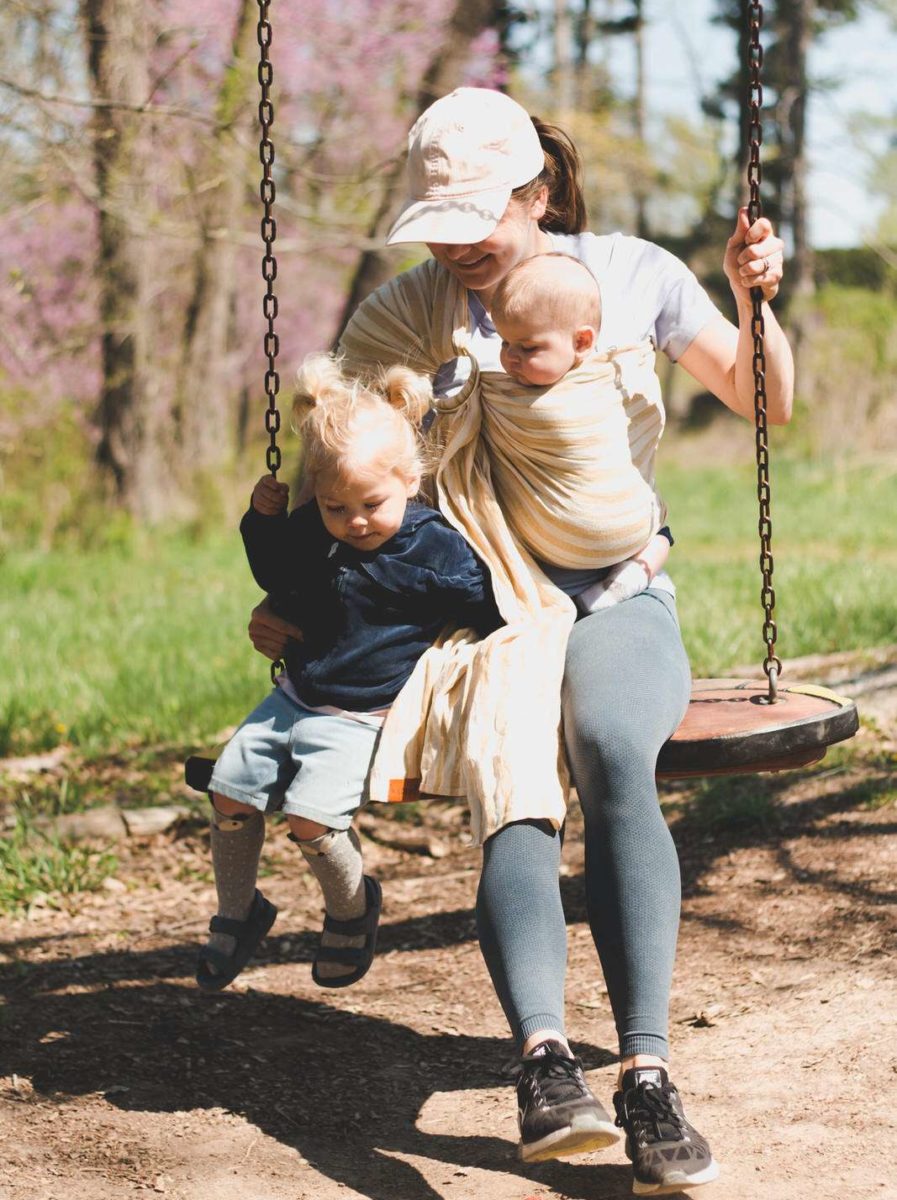I received a glowing parenting-booking recommendation from a dear friend. I love reading parenting and self-help books so it was an easy sell. She recommended “Hunt, Gather Parent: What Ancient Cultures Can Teach Us About the Lost Art of Raising Happy, Helpful Little Humans“. And now I am recommending it to everyone I know! I wanted to have a place to write everything I love and have learned from the book.
Buckle up friends, this is a big post. Bookmark it and make sure to read all the amazing points!
- A quick synopsis of the book:
- How the United States is Parenting Wrong
- The Formula — Practice, Model, and Acknowledge
- TEAM
- Togetherness
- Encouragement
- Autonomy
- Minimal Interference
- Practical Tools Towards a Productive Approach to Commands, Changing Behavior, and Transmitting Values
- An Example: Bedtime Routine
- Things I am Trying to Do as a Mom After Reading this Book
- Phrases I will Use
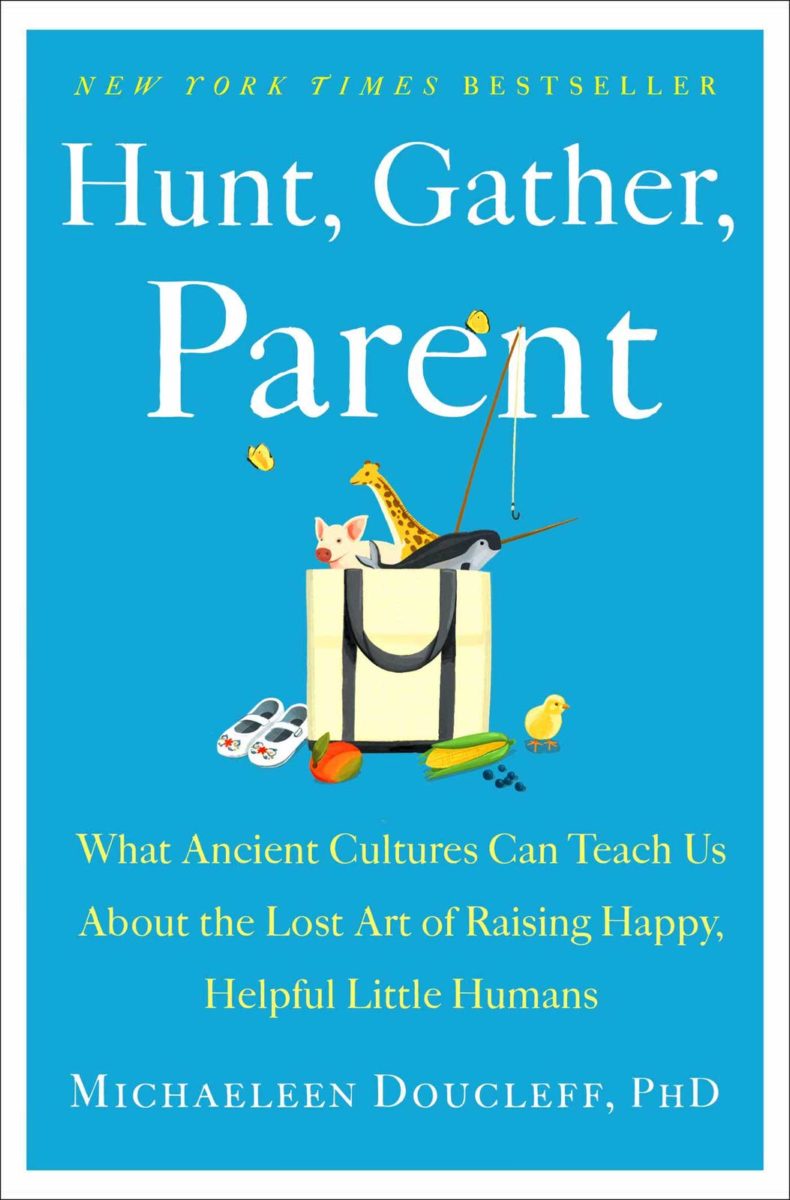
A quick synopsis of the book:
When the author, Michaeleen became a mother, she found modern parenting guidance frustratingly limited and often ineffective.“I’m trained as a scientist. I spent seven years as a chemist and I really believed that the parenting advice we got today was backed by stringent scientific research,” she says. “And when I started looking at the studies as a scientist, I was really, really let down.”
In her research for effective parenting approaches, she visits and intimately examines many different cultures around the world.She and her 3-year-old daughter spends weeks at a time with a Maya family on the Yucatán Peninsula in Mexico; in an Inuit town in a northern Canadian territory; and in a Hadzabe community of hunter-gatherers in Tanzania. Michaeleen witnesses the totally different ways they raise their children to become extraordinarily kind, well-adjusted, drama-free, generous, and helpful kids without any yelling, nagging, or issuing timeouts.
Each culture she lived with thrived in teaching a certain characteristic or skill and in the book she dives into these aspects and explains, with examples, how we can learn from this culture.
There are topics in this book I have read in other parenting books, however, this one was intriguing with her experiences living in these villages around the world who have parented the same for generations. This book feels so much more approachable and the author explains a certain parenting technique in a way that helps me understand its importance. It reads like you’re chatting with a close friend. The informal format makes it easy to digest and her examples are applicable to your own children and parenting situations.
How the United States is Parenting Wrong
What a great title, right? That’s essentially how the book starts. And it was actually not offensive to me at all. She had research to back up that people in the Western culture literally think and interpret information differently than other countries, including the way we cooperate with others, dole out punishments, view fairness, think of the “self,” value choice, and even see three-dimensional space.
Consistent Parenting Styles
The United States is very young, in comparison with the rest of the cultures in the world. And it seems like our parenting styles teeter back and forth with each generation. How my grandmother parented is not the same how my mother parented me and I do not parent the same as my mom. I’m not saying this is necessarily wrong, but I do think it’s interesting to learn that older cultures have been parenting the same for generations.
Alloparenting
There is also research showing the rise of anxiety and depression in the United States. What she reasoned could be lacking are key teachers in a child’s life and the fact that we have enclosed our nuclear family to contain just the parents and siblings of that child. For hundreds of thousands of years, parenting was a multigenerational affair. Kids evolved to learn from a bunch of different people of all ages — great-grandparents, grandparents, uncles, aunts, family friends, neighbors, cousins, and all the children that tag along with them. That erosion of the extended family is detrimental and that communal model of working together to take care of a child is so important. The phrase “It takes a village to raise a child” is all the more crucial to heed. There is even a word for it: “alloparenting” — Allo in Greek means “other”.
There has been research which shows that young children are basically designed to be raised by a group of people, not just two. A mom and/or a dad on their own is really doing the work of several people. So of course we feel worn down and exhausted!
Parental Pressure
Not only do we put so much pressure on ourselves to do everything on our own, we feel that pressure from everyone around us. “As a parent, it was no longer enough to make cookies with your four-year-old son, you also had to give him a math lesson on fractions. Every walk in the woods became a science exercise. Every story before bed became a chance to quiz the child on vocabulary. Every moment became a chance for mommy or daddy to stimulate the child. The more the better.”
As a Western culture generally, she says we tend to interfere too much. We don’t have enough confidence in our children. We don’t trust their innate ability to know what they need to grow. And in many instances, we don’t speak their language. My own addition to this is that we also don’t sit back and observe the situation in their perspective enough.
Before I get into the meat of the book, I wanted to explain a few aspects of parenting that were mentioned in the book that helped me understand how I default parent and what I want to do to change that knee-jerk reaction that our society has taught us to do.
Understanding Parenting & Control
When you boil it down, most parenting techniques or styles you’ve probably heard of revolve around control — how much control the parent exerts over the child, and how much control the child tries to exert over the parent. Helicopter parents exert maximal control. Free-range parents exert minimal control. Our culture thinks either the adult is in control or the child is in control.
However, in hunter-gatherer cultures, the parent’s relationships with their children are built on cooperation instead of control, trust instead of fear, and personalized needs instead of standardized development milestones.
Michaeleen says, “You may not have even realized how many of your parenting struggles were, at their base, about control. But when we remove control from the parenting equation (or at least curtail it), it’s amazing how quickly the struggles and resistance melt away.”
Understanding Their Misbehavior
The topic of misbehavior was threaded throughout the entire book, because let’s face it. That’s the hardest part of toddlerhood and raising young children.In Western culture, we often think our children are “pushing buttons” or “testing boundaries,” or even being manipulative. Michaeleen shares a time when her daughter Rosy was just a baby, and her older sister said on the phone, “It’s amazing how young kids learn to manipulate us so early. You’ll see.” Michaeleen continues: “But what if this idea is completely wrong? Do we really know if toddlers and young children ‘manipulate’ us the way that adults manipulate? That children push our buttons the way that adults push buttons? There’s no scientific evidence that suggests either of these statements is true. There are no brain scans in which the ‘manipulating’ circuitry lights up when toddlers misbehave.”
Truth is, these ideas about why or how children misbehave are cultural constructions. In a way, they are folktales that we Western parents tell ourselves to help us navigate behavior we don’t understand. Hunter-gatherer parents take a different view of young children’s actions than we do.
“Instead of characterizing young children as manipulative button-pushers trying to make us angry, what if we think of them as illogical, newbie citizens trying to figure out the proper behavior? What if we assume their motivations are kind and good, and it’s just their execution that needs some improvement?”
It’s not a reflection of a parent’s skills, but a mere reflection of the way that children are made. This book reminded me to expect children to misbehave. Expect them to be rude, violent, and bossy. Expect them to make a mess, do tasks improperly, and sometimes be an overall pain in the butt. Don’t take it personally (or think you’re a bad parent). It’s just how children are made — they are simply irrational beings who haven’t learned proper behavior yet. And it’s your job, as the parent, to teach them how to behave acceptably and control their emotions.
Understanding Their Emotional Maturity and Executive Function
The Western culture is likely the only place where the concept of “self-esteem” exists—and we are definitely the only culture that requires parents to maintain and cultivate it in their children. Michaeleen writes, “We are encouraged to use oodles of praise, little to no criticism, and constantly solicit a child’s preference. However when you look across cultures — and throughout history — parents praise very little or not at all. And yet their children grow up exhibiting all signs of robust mental health as well as great empathy.”
Here in the U.S., we overestimate children’s emotional abilities. We expect children at a very young age—even eighteen months to two years old—to have well-developed executive function and to understand sophisticated emotional concepts such as respect, generosity, and self-control. And when they don’t demonstrate these qualities, we become frustrated and lose patience with them.
We often overestimate children’s emotional intelligence and skills (while underestimating their physical skills).
Basically, when a child doesn’t listen or behave, the reason is simple: The child just hasn’t learned that particular skill yet. And perhaps, they aren’t quite ready to learn it. So there’s no reason for a parent to get upset or angry.
I loved this point: “As I have to keep reminding myself, there is no race to have my children acquire emotional maturity. I’m still acquiring it at the ripe old age of forty-two.” I can give my children more grace and not try to rush the difficult social and emotional skills I want to teach them. If we don’t have a handle on our own emotions at times, why should we expect a toddler to?
The author mentions: “In Kugaaruk, the children are dripping with executive function: they can see another child’s point of view, remain flexible when situations change, and adapt to the needs of others. They exhibit way more emotional maturity than many children older than them in the U.S.—in many ways they are more emotionally mature than me. Even the little children often act patiently, empathetically, and generously. And they’re excellent at sharing—toys, food, clothes, you name it. Objects seem to present as an opportunity to cooperate and play together instead of argue and compete.”They are master motivators and experts at building children’s executive functions, including skills such as resilience, patience, and anger control.
Okay, this sounds great. So how do these cultures do it better? Here is where the book gets really good. Through her experiences, she has noticed a pattern in the mother’s she lived with and now they intentionally approached situations that inheritantly trained a child to behave in a certain way. Michaeleen broke it down into an easy-to-follow formula for us in the book.
The Formula — Practice, Model, and Acknowledge
For passing along a value or trait, we need two main ingredients, and a dash of a third: practice, modeling, and, if necessary, acknowledging.
This formula was mentioned many times throughout the book and you’ll find it spread through the following points as well. But it’s exactly what it reads. In order for a child to learn (let’s say respect or self-control), they need to practice it (which includes a lot of failure at it), they need to see it modeled correctly in their parents and leader figures in their nuclear family (what they see is what they do), and just a bit of acknowledgement and encouragement from those key people.
TEAM
My favorite part of the whole book is the 4 points in the book that together, spell out an important factor of parenting and how these cultures impact and influence their children. With Togetherness, Encouragement, Autonomy, and Minimal Interference, the family becomes a team.
Here in the West, we often employ two types of motivation: rewards (e.g., praise, gifts, stickers, allowances) and punishment (e.g., yelling, time-outs, groundings, threats). But in many other cultures, moms and dads tap into another type of motivation: a child’s drive to fit in with their family and to work together as a team. To belong.
It’s not my job to entertain the children. It’s their job to be part of the team.
Michaeleen gives an amazing analogy of a family “membership card” for your family. Metaphorically, she explains, you’re giving them a membership card that they carry around in their back pockets. And that card offers full access to the benefits—and responsibilities—of the team. This card tells the child, I do what these adults do because I’m part of this group. When the family does laundry, I do laundry. When the family cleans, I clean. When the family leaves the house in the morning, I leave with them. When the family… You name it, the kid will follow.Rather than scheduling your life around your child, you can simply put your child into your schedule.
You want each member to feel that they’re part of the family and working together as a team — not a VIP that the parents are serving. At the beginning of the book she mentions her daughter’s wild behavior and says, “In many ways, she was like the CEO of a tech company; I was her event manager. I was there to plan her days and ensure she was having a good time.”
Scheduling our day around child-centered activities is so engrained in us. But I loved this idea that we don’t have to be our children’s event planners and managers. The more they are integrated into a normal family life, the more time they will be able to practice and watch us model those key skills and traits we want them to learn. All while it feels like play. You know what I mean: A kid can find in anything some fun.
Okay so let’s go through the 4 points of creating a familial team and what I learned about these in the book.
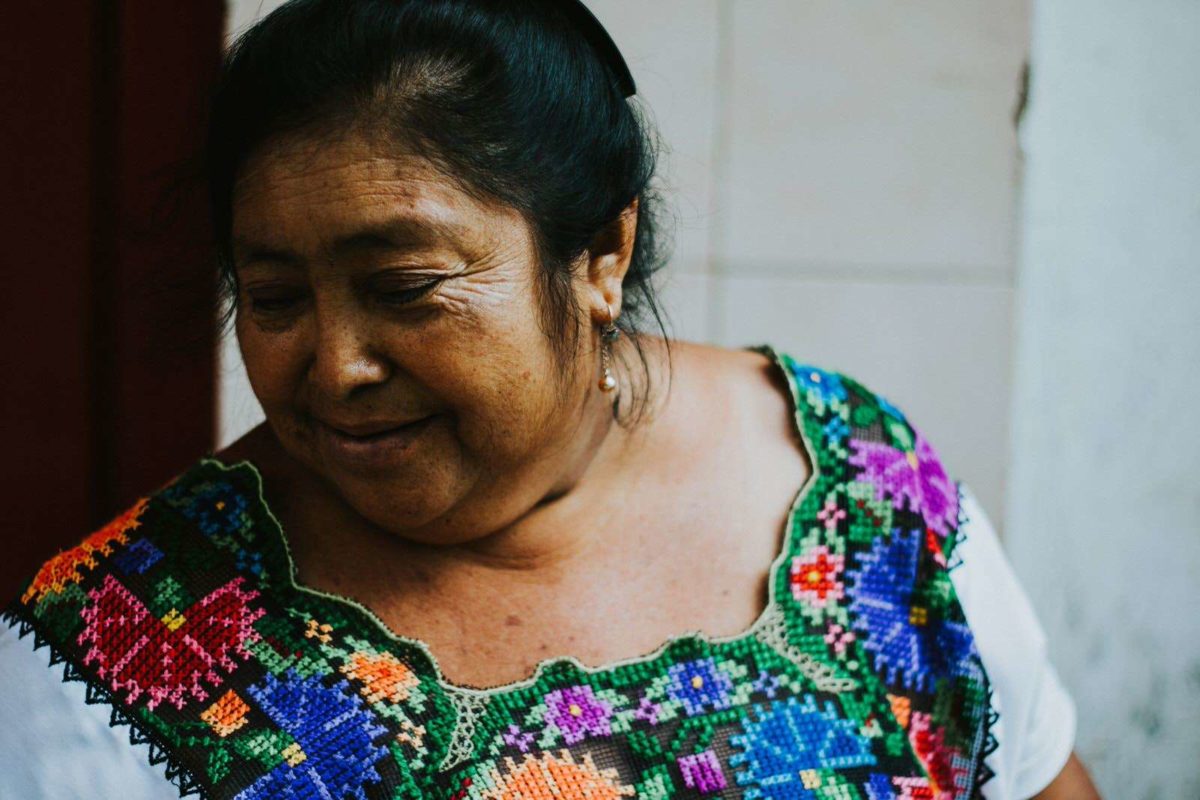
Togetherness
One of the first families she stays with is a Maya family in the Yutacán Peninsula of Mexico. She gives tons of examples of found research and personal stories in the book. Here is what I loved about the idea behind Togetherness.
“Kids and togetherness are the same. Young children have, in many ways, been bred to be around people and work together with them. It’s their default mode and their way of loving us. It not only helps them build deep connections with the adults they love, but it also helps them develop cognitively and emotionally. They need to work together to be healthy.”
“In Maya culture, there’s a belief that everybody has a purpose.”
Going off to the membership card idea, we can welcome our children into our world and come together as a family to accomplish common goals — like making tortillas for lunch was an example Michaeleen observed. Working together is more enjoyable, and often faster (although it can be messier, which I’ll come back to later).
Doing Chores Together
“Togetherness means letting the child hang out or tag along with you, whatever you need or want to do. You welcome the child on an errand or chore, then simply let the child do their thing. If they come over and want to help or watch, they’re allowed. But if not, that’s okay, too. The child is in your world doing their own activities. Two individuals—the caregiver and the child—are coexisting together in the same space, but not demanding attention from each other. Later on we’ll learn more about how you train a demanding child to learn this skill. For now just realize the less you demand of a child’s attention—through orders, directions, and corrections—the less the child will demand your attention.”
“When you invite the child to help, remember the invitation is always to work together. You’re not asking the child to perform the task alone. You can say something like “Let’s all fold this laundry together and we’ll get it finished faster.” Every task becomes an opportunity to work together and reinforce the child’s membership in the family. (Also, remember, the invitation to help is not an order. The child can say no if they want.)”
Turn Crankiness into Contribution — Give Them a Job
When a child breaks rules, acts demanding, or seems “willful,” their parents need to put them to work for the family team. The child is essentially saying, “Hey, Mom, I’m underemployed over here and it doesn’t feel good.”
“I view those whines and complaints in a new way: I see them as Rosy’s way of asking for work. In other words, whining can be a small child’s way of showing interest in learning a new skill. You can harness that interest and get the child to help and contribute. Instead of simply telling them to stop whining, give them a job.”
I have started doing this with Hazel. When she starts to whine, I tell her a job that needs to be done: “Let’s take the dishes out of the dishwasher, can you put the silverware in the drawer?” “We need to grab all these pennies off the ground so James does not eat them. Let’s pick them up.” It doesn’t work every time, sometimes it escalates her whines into screams or she flat out says her “no thank you”. But a lot of the time her whines immediately stop and she joins in the task I have already started on.
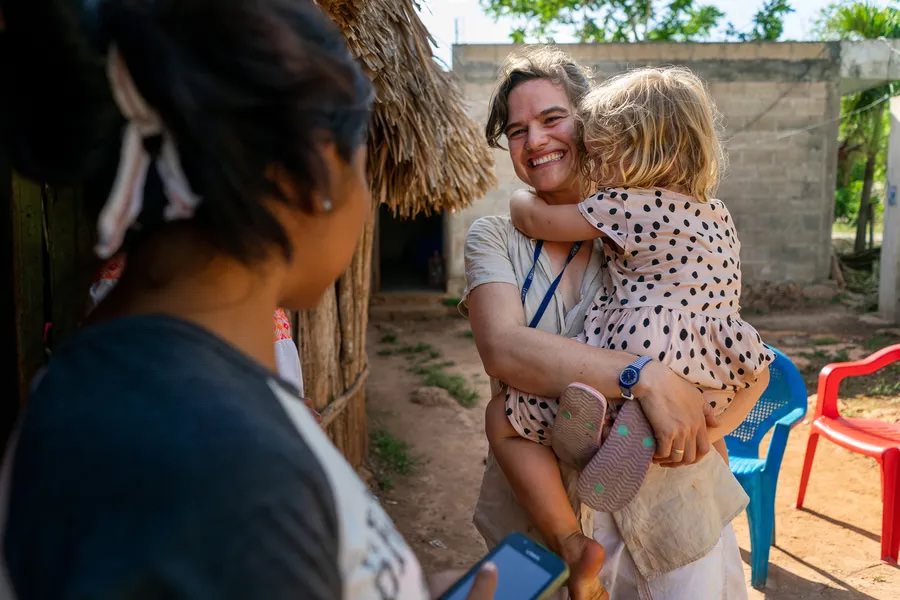
Acomedido
Michaeleen learns from many Maya women she interacts with while living there. She says, “Lucia tells me that parents are teaching their children a skill that’s way more complex than simply knowing how to wash dishes or do the laundry: they’re teaching the children to pay attention to their surroundings, recognize when a specific chore needs to be done, and then do it.”
And it makes sense. The Maya children Michaeleen observed were competent, self-sufficient, and remarkably helpful. And for the most part, they do these tasks without being asked, threatened, or lured with rewards. No gold stars. No allowances. No promises of ice cream.
“This skill—of paying attention and then acting—is such an important value and goal for children that many families in Mexico have an actual term for it: it’s being acomedido. The idea is complex: It’s not just doing a chore or task because someone told you to; it’s knowing which kind of help is appropriate at a particular moment because you’re paying attention.”
“Their parents haven’t just taught them acomedido, they have also taught the children to value their work and feel proud of their contributions to the household. Helping with chores is a privilege.”
So how do you do this? I love this idea of inviting Hazel to help, but her contribution as a 2.5 year old is very primitive and messy and really not helpful in any way. Here are a few points Michaeleen suggests for different child age groups when it comes to teaching children acomedido.
Start Right at the Beginning
“Here’s the thing about learning to do chores, voluntarily: it takes years to learn.”o
Maria tells me: “From day one, when they are small, you start showing them how to help. You have to teach them slowly, little by little, and eventually they will understand.”
“Even when they make a big mess and it takes ten times as long to do a chore, Maya parents see this mess as an investment.At a young age, the goal is to fan the flames of a child’s enthusiasm to help, not extinguish them. If you encourage the incompetent toddler who really wants to do the dishes now, then over time, they’ll turn into the competent nine-year-old who still wants to help—and who can really make a difference.”
So the first step to raising helpful kids can be summed up in a single phrase: Let them practice. Practice cleaning. Practice cooking. Practice washing. Let them grab the spoon from your hand and stir the pot. Let them grab the vacuum and start cleaning the rug. Let them make a bit of a mess when they are little, slightly less of a mess as they grow, and by the time they’re preteens, they will be helping to clean up your messes without you having to ask them—or even running your entire household.
I liked the tips she gave for each specific age groups:
For babies (0 to Walking)
Have them watch you and include them in on the tasks. Instead of leaving my son James on the floor to play while I cook dinner/do the dishes/start a load of laundry (make sure you hear: and when I have the energy), I will put him in a sling and have him watch me do these tasks. He loves it. The Wildbird sling I use keeps his hands in so if I’m cooking something over the stove I don’t have to worry about his hands reaching out. It’s more of a workout but I love glancing down and seeing his eyes lit with curiosity. He is much quieter than if I were to leave him on the floor to play and he gets the chance to see the routine of the family home.
For young children (about 1-6)
For toddlers, the 3 points suggested are to: show, encourage, and request help. Invite them over and show them how to do a task. Encourage that they can perform it and encourage their desire to participate. And request help or assign tasks without forcing.
Remember that it’s all about doing a task together. By including a toddler in a task, the parent is, in effect, telling the child, “You are a working member of the family who helps and contributes however they can.”
“The invitation is always for together, for doing the chore together.”
The key is also to give young children a task that is suitable to their personal skill level. Michaeleen mentions that it’s better to err on the side of too easy than too hard. “If the job is too hard, the child will become frustrated and quickly lose interest (or they’ll require too much instruction or oversight from you). But even the simplest task (e.g., carrying a loaf of bread out of the grocery store) can be exciting for a young child.” Or simply walking across the room to get their shoes is a great task. Go, go, go. Young kids love to go. Harness that energy while also teaching them to pay attention to the needs of others.
Here are some examples (notice the pronoun usage since it’s all about doing a task together): “Hold the light while we try to fix the stove.” “Hold the plate while we take the pancakes out of the pan.” “Open the door while we take the garbage out.”
We’re training the child to cooperate, not to obey the parent. Another piece of good advice given was that part of working together is accepting a child’s preference when they choose not to help. There are certain tasks that are non-negotiables like, for example, brushing teeth. It’s sometimes default to ask for their participation in these tasks when you know the answer you want them to give. So don’t ask; this is when you give direct statements instead of asking for participation.
Another section she spends some time on is to resist the urge to correct a child, especially when they’re pitching in or helping the family. When Hazel dumps all the silverware in the drawer without organizing them, or in Michaeleen’s example, when the toddler takes the tortilla dough and shapes it into a non-usable piece, just step back. “Let a child perform a task without interfering, even if the child isn’t executing the task as you wish or taking the optimal approach.”
For kids (about 6-12)
For older kids, it is time to encourage, activate, and let them take initiative.
“Pay attention to what they try to do or seem interested in trying. Anytime they show initiative, back away and let them go to town. Accepting children’s contributions—without interference—lays the groundwork that will teach them to volunteer help.”
Try activation. Instead of explicitly telling the child to do a task, “activate” their help by telling them you’re starting a chore or by giving a hint that a chore is needed. Michaeleen gives some good example stories in the book on this idea of activation.
When they Don’t Listen
What about when you request or hint at a task and nothing happens? She tells a story example: “You need to comb the little girls’ hair,” Teresa tells her. Again her tone is all business. Although she conveys no urgency or stress, she doesn’t sugarcoat the request, either. She doesn’t sweeten her tone or preface her request with extra words, such as “Do you mind combing the girls’ hair?” or “Do you want to comb the girls’ hair?” or even “Could you please comb the girls’ hair?” Instead, her request is direct: “You need to comb the little girls’ hair.” And it works.
Another good example she gave was Teresa, a Maya mother, getting her children out the door for school. One son needed to grab his shoes. Teresa mentions this and when he didn’t respond immediately to a command, Teresa never pressured him to move faster. She simply waited a few minutes and then asked again, with the same tone. She never triggered a conflict.
Again, he didn’t go looking for them. But she didn’t feel the need to escalate her response. She didn’t turn his disobedience into a conflict. She didn’t even remind him that she’s already asked twice. Instead, she maintains her composure and simply reiterates her request in the same matter-of-fact tone: “Go find your shoes.” Michaeleen adds into the story: “I also notice that she waits a full five minutes before repeating a request to a child. By comparison, I wait about ten seconds—if that.“
Eventually they all got out the door and there was no conflict. The author writes, “Beyond simply wanting to help each other, Teresa and her kids seem to understand each other at a deeper level than Rosy and I do. Teresa knew that pushing Ernesto harder wouldn’t make him get his shoes faster.” I love this idea of learning to understand my children on a deeper level and what will work to motivate them “out the door” so to speak.
“Children have a natural urge to cooperate. They love to please you. And when that’s not happening, it’s because they’re overloaded with tension.”
Once they returned home, she tried out these calm parenting tactics and she said, “These minor changes have produced phenomenal results. Not only does our household have less frenetic energy and resistance, but Rosy is more autonomous. After a few months of us washing hands together, she does it without me having to ask. She simply puts the sunscreen on herself. And leaving the house has become a breeze. She knows I’m not going to debate or negotiate.”
Other Advice About Togetherness I Liked
Family Membership Day
Make Saturday or Sunday your Family Membership Day. On this day, everyone in the family is treated similarly and invited to all the same activities. Replace child-centered activities and child-only entertainment (including child-centered TV, YouTube, and games) with family-centered and adult activities. Focus on immersing the child in the adult world. Do chores around the house, in the yard, or at the office. Go grocery shopping together. Go to a park and have a picnic with family and friends. Go fishing. Go to the beach and read or work while your children play.” Essentially, just do what you want to do, and the kids will have fun because they’re doing it with you.
Lean into Your Personality
I have read lots of parenting books where participation in toddlers usually needs a parent’s playful attitude to entice them in. I always completely subscribed to this idea. But Michaeleen gives her opinion: “I’m not a big fan of making chores ‘fun’ or turning them into a game. I cannot sustain that energy for very long, and I don’t enjoy acting like a three-year-old. But if Rosy comes up with her own way to make the chore more playful, I don’t stop her. Instead, I pay attention to her idea or contribution and try to build upon it.” I like this point because it is a nice reminder that you don’t have to change your personality to be a better parent. Some mothers are naturally playful while others find it annoying. Figure out what kind of parent you like to be and stick with it!
Collaboration
If a parent resists a child’s idea or contribution, it can erode a child’s sense of competency and demotivate them. Parental resistance can come in many flavors, such as ignoring an idea, rejecting it outright (by saying something like “No, no, we can’t do that,” or “No, we don’t do it like that. We do it like this”), or giving a lesson on the “proper” way a task is done. Parents can also resist by not using the child’s work, completely redoing it, or grabbing a tool from a child and doing the work oneself.
This approach works well with Rosy, especially when she can see I’m tired and overworked. I tell her, “Rosy, your father and I are working hard to make this house nice for everyone. We are trying our best. As a family member, you need to work hard and try your best.
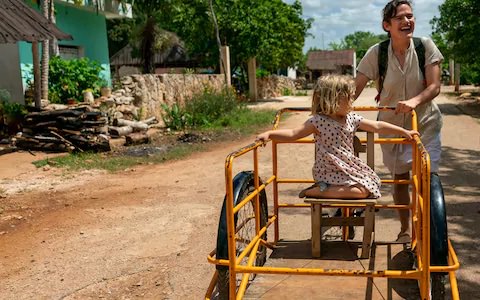
Encouragement
The next letter in the phrase TEAM is E for Encouragement. I mention this a couple of times above in combination with chores and togetherness. The important part to stress is to use encouragement instead of forcing. Forcing children causes three problems: First, it undermines their intrinsic motivation—that is, it erodes a children’s natural drive to voluntarily do a task
************
How many times do you praise the child for an inconsequential task or something they should just be doing without the need for praise? How many times do you resist their ideas? Or just ignore them when they’re trying to contribute? How many times do you interfere with their actions and try to change their course? Each of these questions Michaeleen presents are all important aspects of encouragement. The first one being praise.
Praise
When it comes to praising,is it really the best way to motivate children? For the cultures Michaeleen visits, she heard very little praise in their parenting. She learned, don’t overdo it or do it too frequently. A simple statement like “That’s helpful” is all you need when a child shows acomedido or voluntarily helps. You might even wait until the end of the week to acknowledge the child’s overall effort. Focus on the learning aspect or the contribution to the family: “You are really starting to learn to be helpful,” or “You are starting to be a big girl and contribute to the family’s work.”
Kids aren’t as oblivious as we think. We don’t need to knock them over the head with verbal compliments. A child can see that their contribution matters and they’re helping the family. That’s more powerful than any praise.
Michaeleen says in her book, “In my experience, all the praise just makes Rosy more annoying—a bit more of a pain in the butt. She follows me around, literally seeking feedback and attention (“Look at me, Mama!”). Besides, constantly boosting Rosy’s self-esteem is simply exhausting for me.”
“And a funny thing happened. After a week or so with no praise, I noticed my words becoming more effective. When I did give her feedback, she was more likely to listen. The constant stream of praise and feedback had been drowning out what was actually important to me. Without the extra remarks, Rosy could more easily understand when I really needed her to listen or be cooperative.”
Lastly, praise is known to breed competition. The lack of praise may be one reason Maya siblings work well together (and fight less than American siblings). “They don’t need to compete with one another for a verbal kudos.”
The Nod
After her observation, Michaeleen asks, “Are words the ideal way to communicate with young kids? Are verbal instructions truly the best to teach children?”
The parents don’t say, “Good job,” or other phrases like that. Sometimes they may use facial expressions to show their approval. And these nonverbal expressions are important. They are clear signs of approval.
I love this idea of “the nod” or using facial expressions. I am not a very talkative person and when Hazel was first learning to speak (a little later than some babies her age) it started to worry me that I hadn’t been verbal enough, read her enough books, etc. My doctor suggested saying everything I was doing out loud so that Hazel could become more acquainted to language. Michaeleen even mentions a very similar experience at the beginning of her book. Eventually Hazel learned enough to communicate and she was totally fine. I like the idea of giving her approval with as little words as possible, because the more words I use, I notice the louder I start talking, and the more I just sound like I’m performing for the parenting police on the playground.

Autonomy
The next letter, A, stands for Autonomy. Which is a concept I was pretty familiar with because of my love of Montessori. Autonomy is a person’s right to self-governance to make their own decisions.
In general, hunter-gatherer communities greatly value this right—they believe it’s harmful to control another person. This idea forms a cornerstone of their belief system, including their parenting.
An autonomous child governs their own actions and makes their own decisions, but they have a constant connection to their family and friends. They are expected to help, share, and be kind. They are expected to give back to the group whenever possible. They have freedom—which also comes with responsibility.
I liked this point Michaeleen made in a section: “If one kid comes over and complains about another kid, nod and say, “Hmm.” Kids know what to do. They don’t need more validations of their feelings. They need autonomy.” They need to know that they have control over themselves and the choices that they make.
Controlling Emotions
To think that young children have the ability to control themselves, especially their emotions, without a lot of work behind the scenes, is laughable. But Inuit parents have developed a remarkably effective approach for teaching children emotional intelligence. When kids cry, hit, or act out, Inuit parents model and respond with a calm, gentle demeanor that teaches children how to settle themselves down and think before acting.
Inuit see arguing with children as silly and a waste of time because children are just really inept, illogical beings that are expectedly misbehaving because they haven’t learned yet.
When arguing with and getting angry at a child, they think the adult is stooping to the child’s level. It’s essentially as if the adult is having a tantrum. And so when Michaeleen first lived in the Inuit village, she got a lot of stares when she would try to help her daughter out of a tantrum.
Parental Anger — Calm, Relaxed Confidence
This was absolutely my favorite part of the book. I really really want to be a calm force in my family. And this book spent a good amount of time explaining and giving examples of this in the Inuit culture.
Inuit mothers told Michaeleen, “When children are little, it doesn’t help to raise your voice or get angry at them. It will just make your own heart rate go up.” For some reason I just loved this sentence, because most parenting books will tell you something about how raising your voice or getting angry will hurt your children’s psyche or self-esteem. When this Inuit mother just ignores that because it’s just not true. Nope, all it will do is just get your heart rate unnecessarily up.
Children learn emotional regulation from us. If we can control our own anger we are helping our children learn to do the same.
Anger control is a skill children learn over time with practice and modeling. To help a child learn anger control, the best thing you can do is control your own anger in front of the child.
Maya mothers were good at this too. “And no matter what chaos whirled around her during our visit, Maria was always cool as a cucumber. Even when she admonished her youngest daughter, Alexa, not to touch the charcoal fire, she spoke in a calm voice, and her face remained relaxed. There was no sense of urgency, anxiety, or stress. And in return, her children were awesome to her. They respected her requests (for the most part). They didn’t argue or talk back.”
“They never seem to lose their temper or even become flustered. Children are everywhere, lots of them. And yet there’s never any urgency to the parents’ responses to them. Parents never make quick actions to quell a child’s energy or movements. They make no loud demands or insist a child stop what they’re doing or act a certain way. No matter what, the adults just radiate calmness: ubiquitous, pervasive calmness.“
“Seriously, we are talking about a degree of calmness that we rarely see in Western culture. Think lying-facedown-on-a-massage-table calmness. Or the way you feel after taking a long, hot bath. Think Mister Rogers, stoned.”
She tells this story of being in a grocery store: her daughter Rosy is tantruming and she is desperately trying to make her stop. She says, “Thank goodness Elizabeth is there. She walks over to Rosy and does the exact opposite of what I’m doing: she brings the energy down. Way down. Instead of getting firm and stern, she becomes sweet, tender, and calm. So calm! Her facial expression is soft; her body is relaxed. Her movements are small and gentle. At first she’s quiet. She waits a few seconds. Then she begins to speak to Rosy in the most quiet, loving voice I’ve ever heard her use. Her words are slow and deliberate. And she doesn’t say much. She simply meets Rosy’s storminess with tenderness, as if she is offering a soft blanket to a lightning bolt. Rosy is spellbound. The screaming stops—right away.”
Parents and children can easily fall into a cycle of anger (myself included!!), in which the parent’s anger generates anger in the child, which in turn triggers more anger in the parent. You can stop this cycle by responding to the child with kindness and calmness. When we don’t, this gives them all three of the formula negatively: we model getting angry at children, we give them tons of practice at yelling and getting angry at us. And if we yell back again, we acknowledge and accept their anger.
One side note I want to add is the idea that just because we are not standing our ground with yelling doesn’t mean we are pushovers. Michaeleen tells of a conversation she had with an elderly person in the community. “I never, ever remember my dad being rude or loud to me,” the seventy-nine-year-old says. But that didn’t make his parents pushovers. “My mom was strict. She wouldn’t allow us to stay up late, and she made us get up together in the morning. But she never yelled,” he says.
Taming Tantrums
In the Inuit village, if a child starts screaming, thrashing, crying, or even hitting, the parent doesn’t rush over issuing commands, nor do they tell the child to calm down. They don’t make threats (“If you don’t stop screaming…”) or sweet offerings (“What’s wrong? Do you want a drink? Do you want to go to…”). Instead, the parents show the child how to be calm by being calm themselves. Why is this strategy so darn effective? It’s pretty simple: children’s emotions—and energy level—mirror those of their parents.
As Michaeleen lived in this calm village, seeing her daughter act out started to raise a mirror up to her own anger. “It makes me realize how when I raise my voice and scold her, I actually trigger her tantrums and meltdowns” she mentions.
“Whenever I see them in an exasperating situation with a child, they pause, say nothing, and observe.”
Maria, the Maya mother, told Michaeleen of this strategy on the first day they met, while chatting at her kitchen table. “When I feel anger coming, I leave the children or grandchildren alone,” she said. “I just leave them alone.” Michaeleen writes, “Look at the first part of Maria’s sentence: When I feel anger coming. Maria doesn’t wait until anger has already struck to leave the room. Instead, she removes herself from the situation when she first detects signs of incoming anger.”
- Walk Away
- For a few minutes, even a few seconds, just walk away. You can leave the room. Get out of the car. Walk down the sidewalk. Walk across the park. Or simply turn your back on the child.
- Close your mouth
- Just say nothing. If you need to, close your eyes. Take a deep breath.
- See a different perspective or put it in a different context
- Repeat in your head: “He/she not pushing my buttons. They are not manipulating me. They are an illogical, irrational being. And he/she doesn’t yet know the proper way to behave. It’s my job to teach them rationality and logic.”
“Think about your kid’s nervous system almost like a volume dial. My job is to help my kid’s dial go down. And to do that, it first starts with me. If I yell at him or I join the chaos, I’m turning his volume dial up. So my job is to think about my own dial and make sure my dial doesn’t get turned way too high or too low.”
She tells a story of a young toddler who has high energy and ends up scratching and drawing blood on the Inuit mother’s cheek. And what does the mom do? She remains calm and slowly peels his chubby, short fingers off her skin and says with incredible kindness, “You don’t realize this hurts, do you?” This would be so hard to do but it makes sense that freaking out on a young toddler will only heighten the emotions in the room.
Not the Time to Prove a Point
See tantrums as a chance for the child to practice calming themselves down, and for you to model calmness—not the time for you, as their parent, to prove a point. Not in the moment and not immediately after, but later on, when everyone has calmed down. In these peaceful moments, children are more open to learning
“Getting angry isn’t going to solve your problem. It only stops communication between the child and the mom.” When you yell at children, they stop listening. When a child is upset or defying the parent, the child is too emotionally charged to listen.
Tame with Touch
Tantrums go away if we respond to a child with calmness. Next time a child has an emotional outburst, stay quiet and try one of these tools: Energy. In the calmest, lowest-energy state possible, simply stand near the child, silently, and show them that you are close by, supporting them. Physicality. Reach out and gently touch the child on the shoulder or offer a hand. Sometimes a soft, calm touch is all a child needs to calm down.
Touch lights up a child’s brain like fireworks. Roughhousing releases a chemical in the brain, called BDNF, which helps the brain mature and grow. Tender gentle strokes release the “cuddle” hormone oxytocin, which signals safety and love to a child.
And for kids of all ages, physicality is more effective than lecturing, scolding, or long explanations. When children feel upset, they don’t have access to the “left” or logical side of the brain,
If a child misbehaves, they need more calmness and more touch. And there’s two kinds of touch: low-energy and high-energy. A high-energy type of physicality is picking them up and zooming them around the room like a plane, tickling them, etc. This kind of high-energy, when used at the right time and right child, will reduce the rising tension between the two of them, while also distracting the child from his destructive behavior. For another child, they may need a low-energy type of physicality, which is soothing her nervous system and bringing her energy down. This is why it’s so important to observe, learn, and understand your children and how to best parent them individually.
Tame with Awe
I liked this idea of taming a tantrum with replacing their anger with the emotion of awe. She suggests to look around and find something beautiful. Tell the child, in the calmest, most gentle voice, “Oh wow, the moon is so beautiful tonight. Do you see it?” I have tried this with Hazel and since I am calm and almost whispering, she stops, finds what I am looking at, either the moon or a bug crawling on the sidewalk, and will zone in and match my calmness too.
Tame with Outside
If the child still won’t calm down, take them outside for some fresh air. Gently lead them outside or pick them up and take them to a new environment.
It never hurts a child to give them a hug when they’re upset, to model awe or gratitude when they start screaming, or to offer them some fresh air and time outside when a tantrum erupts. You’re not giving into their demands, but rather using the tantrum as a moment to help them flex other neurological circuitry.
Less Talking
I mentioned this a bit previously but it also deserves a place here. Because not only are we padding requests with way too much flowery, unnecessary language, but we are talking too much during tantrums as well.
Michaeleen confesses, “When Rosy angers me, I always seem to erupt with a volcano of verbiage: “Rosemary, please stop that.” “Why are you crying now?” “What is wrong?” “Do you need?” “Do you want?” All of these questions and statements are doing the opposite of what I want them to do. They convey a sense of urgency and stress. And they worsen Rosy’s tantrums. Even when I try to remain calm, the words always give away my emotion.”
Michaeleen adds research that shows during emotional outbursts, the “right side” of a child’s brain calls the shots—and the right side is all about nonverbal communication. Thus, talking your kid out of a tantrum is scientifically impossible!
So what do you do? What all of above is saying: stay calm, keep your energy low, and speak just a handful of words. Or close your mouth and don’t speak at all. Similar to this is the art of ignoring.
Ignoring
Following the Inuit villagers lead, when in doubt, Michaeleen learned to turn away. “Elizabeth is a master at ignoring Rosy. Sometimes all she needs to do is ignore Rosy for ten seconds and, poof! Misbehavior ceases. Calmness ensues. Once Rosy realizes that her misbehavior doesn’t deserve attention—that maybe, she doesn’t need our attention—she falls in line and starts cooperating. And Elizabeth welcomes Rosy back into the social circle with a smile or nod.”
Stop talking. Just stay quiet. Ignore.Practice being silent. Learn to have less—or even no anger toward children. (Note: I’m not talking about controlling your anger when it arises, but rather generating less anger in the first place.) This may seem like a mountain of a task but just take it one child argument at a time. Just do better than your last parental outburst and soon we’ll all be stoned Mister Rogers.
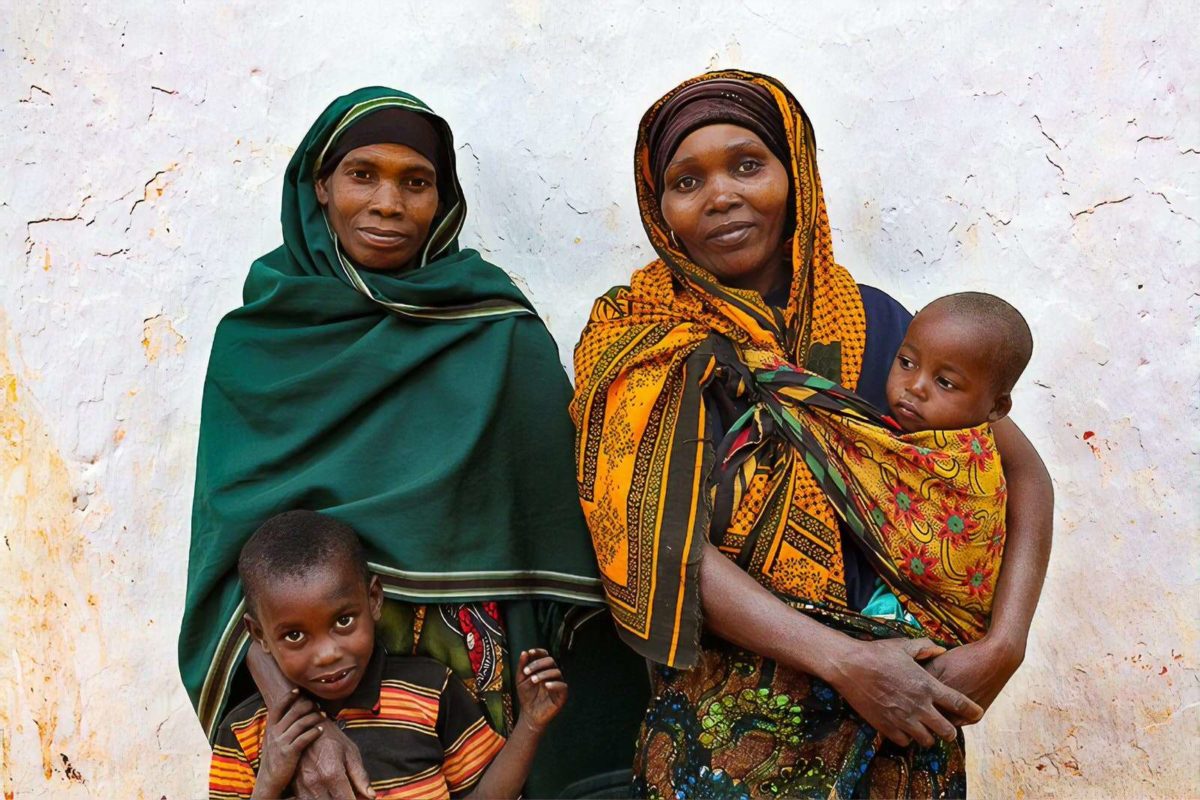
Minimal Interference
The last letter of the acronym TEAM. I love the idea of interfering as little as possible with Hazel so I was excited to read this section. Michaeleen stays in a village in Tanzania. The Hadzabe people coexist together, with minimal interference and with mutual respect; and through reciprocity, they love and connect.
Minimal interference is somewhat similar to autonomy: not interfering with the child’s exploration. A Hadzabe mother says, “The child knows what they’re doing, but I’m there in case they want to engage with me or they need help.”
Michaeleen tells a story of her guide telling her to stop and “wait-a-bit” when Rosy is having a little trouble scaling large rocks while she’s exploring. She writes, “When I step back, wait-a-bit, and let Rosy handle the world on her own, I convey several important messages to her. I tell her that she’s capable and self-sufficient; that she can solve problems on her own; and that she can handle what life throws at her. Think back to the formula. By letting Rosy act on her own, I give her opportunities to practice being self-sufficient and independent. And I model respect for others.
She continues, “Empower the child by training them to handle obstacles and dangers, which in turn allows you to reduce your commands.” I am all about letting Hazel take reasonable risks, especially at places like the playground. She has no problem climbing the dangerous obstacles that are definitely not meant for children under the age of 5 but because she has practice, she either learns how to scale these ladders, or understands where her limits are and asks for help.
Minimal interference not only allows children to practice this reasonable risk taking, but it reduces conflict and gives them tons of practice at entertaining and taking care of themselves. “They become incredibly skilled at the art of solitary absorption and self-generated fun. They learn to figure out problems on their own, settle their own disputes, make up their own games, prepare their own snacks, even get their own gosh-darn milk.”
If Hazel and James are playing in their room together, I usually close the door and go get a couple tasks done. I keep my video monitor visible on my phone and if I hear any crying, I can check that there is no danger. If there isn’t, I let the whining and fighting be. Hazel has eventualy learned that if she wants to play, she needs to keep James happy and she will bring him things when he gets frustrated that she stole his toy, etc. She is learning problem-solving when I just sit back and observe silently from a distance. And if I check the monitor and she’s sitting on him, I know it’s time for me to interfere.
Think 20-20-20
I liked this challenge she mentions: take 20 minutes each day and stay at least 20 feet from my children and for 20 minutes be silent. Staying far away from my children seems almost impossible when they are literally climbing all over me but I bet I can find 20 minutes each day to be silent and separate from them as they do their own thing. The more I did this after reading this book, the better Hazel got at entertaining herself and she will play in her room during quiet time for more than an hour before she plops down for a nap which then gives me about 3 hours of alone time!
Freedom — Emotional and Physical
The Hadzabe kids have all kinds of freedom, even emotional freedom. If a child needs to have a tantrum, so be it. No one rushes over to shush them; no one tells them “to calm down”; no one tells them how to feel. Eventually, a parent or other child will console the child, but no one shows any sense of urgency. This idea of no sense of urgency in multiple cultures Michaeleen visited is intriguing. All part of the calm parenting I want to be. Unless there is blood, there shouldn’t be any urgency towards the matter, or at least that’s how I see it.
Hadzabe families parent from a different vantage: they believe that children know best how to learn and grow. Anything a parent says—the vast majority of the time—will only get in the child’s way.
“When a parent is really trying to change a kid’s behavior and make him do something he doesn’t want to, another parent will say, ‘Let your kid do what they want to do; it’s not your place. Let them be.’ ”
But with that freedom comes expectations that the child will help their family.
Expectations
They expect their children to not only share her food with the younger children, but to give them that share first. Michaeleen writes, “In fact, the moms and dads in the community have trained Belie to do this since she was a baby, through the formula of practice, model, and acknowledge.”
Freedom (sweetness) on its own, can generate selfish kids. But add a pinch of teamwork (tartness) and the child bursts with generosity and confidence.
***
Stop Offering Choices
In these communities Michaeleen became a part of, none of the parents ask “Do you want” questions. Instead, the parent just takes action.
This concept of offering choices is something I’ve read about in some of my parenting book studies, and usually they all subscribe to this tactic. I see it everywhere: “If you give a child options, it helps them feel like they have some power and control over what they do.” Do you see the word control in there? How ironic with what was said at the very beginning about Western culture parenting.
Michaeleen writes, “Why on earth do I constantly ask a three-year-old what she wants? How can a child learn flexibility and cooperation if we always ask them, “Do you want…?” Rosy has never shied away from telling me what she wants; we don’t need to encourage choice. Offering options frequently generates negotiations, unneeded decisions, and eventually tears.”
Now, I’m not kicking choices to the curb at all, I think they can come in handy when you need your child to walk across the street safely and you can offer either holding your hand or being carried across. But getting in the habit of asking which plate color, which snack, or the other superfluous questions we tend to ask, will take us back to the CEO or VIP idea. They become the center and the parents revolve around them. However, in reality, the family’s priorities as a whole should always come first.

Whew, okay, take a breather. Togetherness, Encouragement, Autonomy, and Minimal Interference was a large majority of the book, but I still want to add a few of the practical tools she mentions that I loved.
Practical Tools Towards a Productive Approach to Commands, Changing Behavior, and Transmitting Values
I still learned so much more from this book that fit somewhat outside the TEAM acronym. Throughout the book, she talks about tools that open up communication between children and parents. How they build connections and ease tensions instead of cutting communication off as punishments and anger do. Here are a few of my favorite tools.
“The Look”
Instead of telling the child “Don’t”, prompt them to think and figure out the proper behavior themselves with: The look. Take whatever you want to say to a misbehaving child and channel it into your facial expression. Open your eyes wide, scrunch up your nose, or shake your head. Then shoot the look over to the child.
“The look” has many advantages over words. It works at a distance—across the playground, the living room, or the dinner table. And since it’s silent, children have a very hard time “arguing” with “the look.” Kids can’t negotiate with a nose or a pair of eyes like they can a verbal command.
Consequence Puzzle — Question
The next time you would like to change your child’s behavior, pause for a moment. Wait before you talk. Think about why you are issuing this command. What is the consequence of their behavior? Why are you trying to change it? Or even, what do you fear will happen if the child continues that behavior?
“When you tell a child “don’t” and “stop,” you assume they’ll obey the command as an automaton would: without a thought of their own.” This is not how the cultures Michaeleen function.
The goal of Inuit education is to cause thought.
Calmly state the consequences of the child’s actions, then walk away/stay still (e.g., “You’re going to fall off and hurt yourself”).
Similar to just stating the consequence, Inuit culture uses this tactic a lot by asking the child a question that allows you to get your point across without causing a power struggle.
Instead of issuing a command or instruction, ask the child a question (e.g., “Who’s being mean to Freddie?” when a child hits a sibling, or “Who’s being disrespectful?” when a child ignores a request).
“The parents often state these questions with a half-sarcastic, half-serious tone. The questions aren’t accusatory or denigrating. They aren’t meant to make a child defensive. Instead, the questions are more like a puzzle for the child to solve, a prompt for the child to consider their actions and the potential consequences.”
Turn your commands, criticisms, and feedback into questions.
“The new Michaeleen pulls out the question tool and stays calm. In a matter-of-fact way, I say, “Who’s being disrespectful?” I look away from Rosy as I say it, because I’m not trying to accuse her—I’m trying to get her to think.”
Semi-Dangerous* Behavior
When it comes to somewhat dangerous actions, our commands almost always begin with “Don’t”: “Don’t climb on that chair,” “Don’t spill the milk,” “Don’t grab the toy from the baby,” “Don’t, don’t, don’t, don’t…” Michaeleen writes, “But Elizabeth never—or rarely—seems to use that word. Instead, she and many Inuit moms and dads I met take a more productive approach. Parents tell children what will happen if they continue misbehaving. Parents tell children the consequences of their actions.”
It’s not just Inuit mothers that work on this, Maya mothers do too. Rosy starts throwing large rocks around other children and Maria simply states the consequence of Rosy’s action matter-of-factly and allows Rosy to figure out the proper reaction. “To my surprise, it works. Rosy pauses for a second, looks at the rocks, then puts them down.”
When telling your child the consequences, you don’t have to be mean, scare them, or hurt their feelings. You simply aren’t responding emotionally to their misbehavior. You stay neutral and show them that you have zero interest in that behavior.
Michaeleen tells a story, “Rosy runs over to the bridge, and I begin to yell, “Wait! Don’t go near the edge!” But before I can get the words out, Elizabeth has already reached Rosy. She gently takes Rosy’s hand and says calmly, “You could fall and hurt yourself.””
*Now if your child is in immediate danger like walking onto a busy road, it’s obvious that that’s not the time to be issuing consequences but instead taking action and getting them physically out of the situation.
Annoying Behavior
Outside of just consequences for dangerous behavior, there are many other ways you can help your children to think and respect the people around them.
She shares a story about a child squeaking a rather annoying toy. “After delivering a warning, I notice, Jean doesn’t say anything else. She doesn’t press Tessa to stop squeaking the toy. She doesn’t nag or yell. She, as the adult, simply prompts the child to think about their behavior and its consequences, then the mom leaves the child to extrapolate the proper response to that information. This way of communicating with children respects their autonomy and their ability to learn.”
Michaeleen tells the readers “When she doesn’t share a toy with a friend, I say, ‘____ won’t want to come over and visit if you don’t share.’ And so on. I always try to say it as calmly and emotionless as possible. Any sternness or condemnation will just start a fight.” It’s not about saying those sentences as threats but just neutral statements to help them think and understand the natural consequences to their (rather annoying) behavior.
“When she continues to misbehave, I (try to) let it go and feel confident that she hears me and is on her way to learning. I often sense that Rosy is considering what I said. And it feels good to know that I have passed along information that will help her make the proper choice next time.”
Responsibility
Another practical tool is to give a misbehaving child a task to do (e.g., say to a whining child in the morning: “Come over and help me make your lunch”). Action.
Or, instead of asking a child to do a task (e.g., leave the house), just do the task yourself. The kid will follow once they learn it’s their responsibility to govern themself.
Telling Stories
The Inuit culture do a lot of story telling in their parenting to get across lessons or ideas. It can be something completely fantastical and made up, or a story about yourself growing up.
Your child is much more likely to comply with a request if you first tell her that your mom made me do the same dreaded task during your childhood.
Make sure to sprinkle in details your child can use to visualize the story in their minds, such as colors, smells, and familiar objects. Have fun with it! These are easy to do while on car rides since they can’t do much in their seats except listen.
The Inuit culture tells some pretty outlandish stories to keep their children safe or from misbehaving. For example, there is a legend that they cannot go onto the ice because the water horse will drag them down and take them to live with a new family. At first, it seems a little intense, but the children are afraid of going out on the ice, which keeps them safe from falling in and where these communities live, that is a real danger at every turn. As the children grow up, they learn and realize the stories aren’t true and they don’t feel in the slightest betrayed by their parents for telling these kind of stories.
Michaeleen gives an example: “We help Rosy brush her teeth by telling her stories of the “critters” inside her mouth. They are so tiny you can’t see them (yes, they are bacteria). But they live on your teeth, and you have to brush them off or they’ll punch holes in your teeth at night and turn them black. In essence, we take real science and jazz it up with imagery, anthropomorphism, and hyperbole. These critters get sick when Rosy eats too much sugar. But they love fruits, veggies, beans, and nuts. ‘The creatures are screaming for chickpeas, Rosy,’ I find myself saying at lunch. ‘They are saying, ‘Please, please, Rosy. Give us more chickpeas. More chickpeas.’ ”
Michaeleen also mentions that she always keep a wink in her eye when she tell her stories, and keeps a close watch to make sure she don’t scare her daughter too much.
Other stories she tells her daughter is that spiders will make webs in her dress if she does let her mother wash it frequently. Or that there is a monster in the fridge that can get out if the door is left open for too long. All these stories came from certain behaviors that Michaeleen found problematic in their family life.
She tells about her memory of growing up behaving because she feared her father’s anger. And she concludes, “To be honest, I would rather Rosy be afraid of a ‘refrigerator monster’ or the ‘spiders in a dress’ than fear me or her father.”
In addition to following rules and keeping out of trouble, these stories teach a child to keep their cool and not to be provoked so easily. She says, “They teach you to be strong emotionally, to not take everything so seriously, or to be scared of teasing.”
Play
Play makes a powerful parenting tool for changing behavior, one that many parents overlook. The Inuit mothers will tell their children to throw a rock at them and when they do, the mother says, “Ouch that hurts me!” Then asks the child to do it again, until the child decides to stop. Sounds a bit weird in my head but to their culture in this kind of unique “play”, the child is actually trying to practice the proper behavior. They keep repeating the wrong behavior over and over again until they finally makes the right decision.
This is the time for kids to feel safe to misbehave and try out new skills, without any worry of upsetting parents. Most parenting books would freak out over this idea, saying it will confuse the child. And I personally haven’t figured out how I would use this idea with my children, but I can see that it is important for a safe space for role-playing and practicing misbehaviors for children who are learning how to be self-sufficient and emotionally self-goverend.
“During this type of play, the child isn’t going to remember the ‘modeling.’ But instead, she will remember the human connection, the creativity, and tension release.”
And that is the book! Do you feel like you just read the length of a book? Sorry, I obviously loved everything in it. And the book is way better than this boring thing because Michaeleen gives all great personal experience stories during her 3 visits. I wanted to end with a “real life” example from the author and a few final takeaways I got from the book.
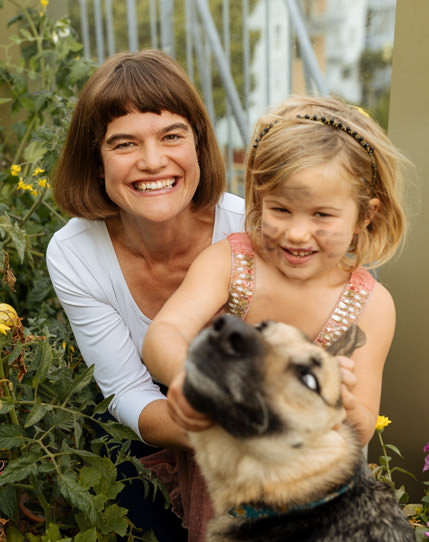
An Example: Bedtime Routine
Around eight o’clock each night, I began to watch Rosy like a hawk. When I detected her tired signals (e.g., rubbing her eyes, sucking her thumb, whining more), I turned down the lights in the house. I’d noticed how the darkness in Tanzania really calmed her down.
Model. I said, very calmly, “I’m tired. My body is telling me I’m tired. I’m going to bed.” I went upstairs and got myself ready for bed (although I wasn’t going to sleep). I brushed my teeth. Flossed. Put on my pajamas. Then I got into her bed, and started reading a book. And I waited
Acknowledge. When she came upstairs and laid next to me, I gave her a bit of positive attention. I hugged her and smiled at her. Then I connected the desired behavior to maturity with one question: “Rosy, what would a big girl do now?” I stayed in the bed and continued to model what I wanted her to do. I didn’t forced her to get ready for bed but rather encouraged her with the tools we’ve learned
Practice. Once she got her pj’s on and brushed her teeth, I helped her fall asleep by rubbing her back. I stayed calm the whole time and didn’t pushed. If she talked or whined, I simply said, “Let’s be quiet and still so our bodies and minds can calm down and go to sleep. I’m tired.”
Encourage: I encouraged Rosy to go to sleep instead of forcing her at a particular time. Autonomy: Rosy decided, on her own, when to go upstairs to go to sleep. Minimize interference: Instead of controlling Rosy’s behavior, I did what was minimally required to help her learn a valuable life skill.
Things I am Trying to Do as a Mom After Reading this Book
- This book taught me that simple actions and gentle touches are way more powerful with children than commands.
- If I meet Hazel’s emotional outburst with my own emotional outburst I will only make the situation worse. If I meet her high energy with calm energy, she will settle down, and the tantrum will more likely come to a stop.
- I love the point Michaeleen made that once you slow down and stop trying to change a child’s behavior so much, your sensitivity for their love grows by volumes. I have seen this as I’ve focused less on trying to change Hazel’s behavior and just put myself in her little shoes. She is trying her gosh darn best and I love her for it!
- The book changed the way I thought about Hazel’s zest to help. Like the author wrote, “Even if she made a huge mess, broke something, or came over and grabbed a utensil from my hand, I’d remind myself, She is trying to help but doesn’t know how. I need to teach her. And that can take time. I would step back, let her perform the tasks as she wanted to, and try to minimize instructions or comments. And I would encourage any interest in doing chores, even when it seemed like she was only playing or joking around.”
- I am all about the Montessori, child-centered activities, making things fun for kids but this book was a reminder that I don’t have to do that all the time in order for my child to learn skills I want her to acquire. Just doing my own thing and having her tag along, involving her and including her in as a contributing member of our family team, is all she needs!
- I am wanting to be a calm mother — an impenetrable fortress of peace!
- I am working on acknowledging her emotions less. If I am constantly validating Hazel’s emotions, how does she learn a more productive way to handle those frustration or problems? I found myself being a broken record acknowledging her frustration one after another and I am sick of it so this book gave me permission to sometimes just ignore or find a better way to help her pass through those emotions.
- I am going to stop being her ventriloquist. Like the author states, “I didn’t realize how much I act as Rosy’s ventriloquist until I see how the Hadzabe parents never answer for children or tell them what to say. Never, ever. Let them answer questions directed at them, order at restaurants, decide when to say ‘Please’ and ‘Thank you.'” I liked this note and am going to let her answer for herself now that she has the vocabulary to do so if she wants to.
- Pause, say nothing, and obvserve. Take a deep breath before deciding what to do or say.
Phrases I will Use
“Everyone does what they want, but they must be kind, share, and be helpful.”
“Let’s be quiet and still so our bodies and minds can calm down and go to sleep. I’m tired.”
If you want to read more before getting the book (just get the book!), you can see online articles written by Michaeleen here. Also a few podcasts as well


